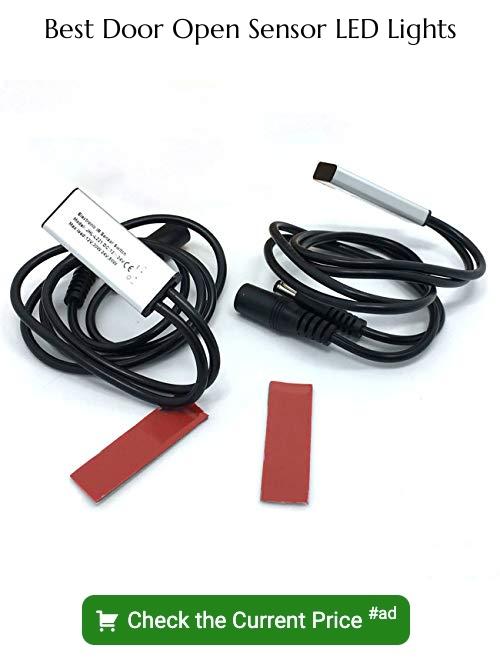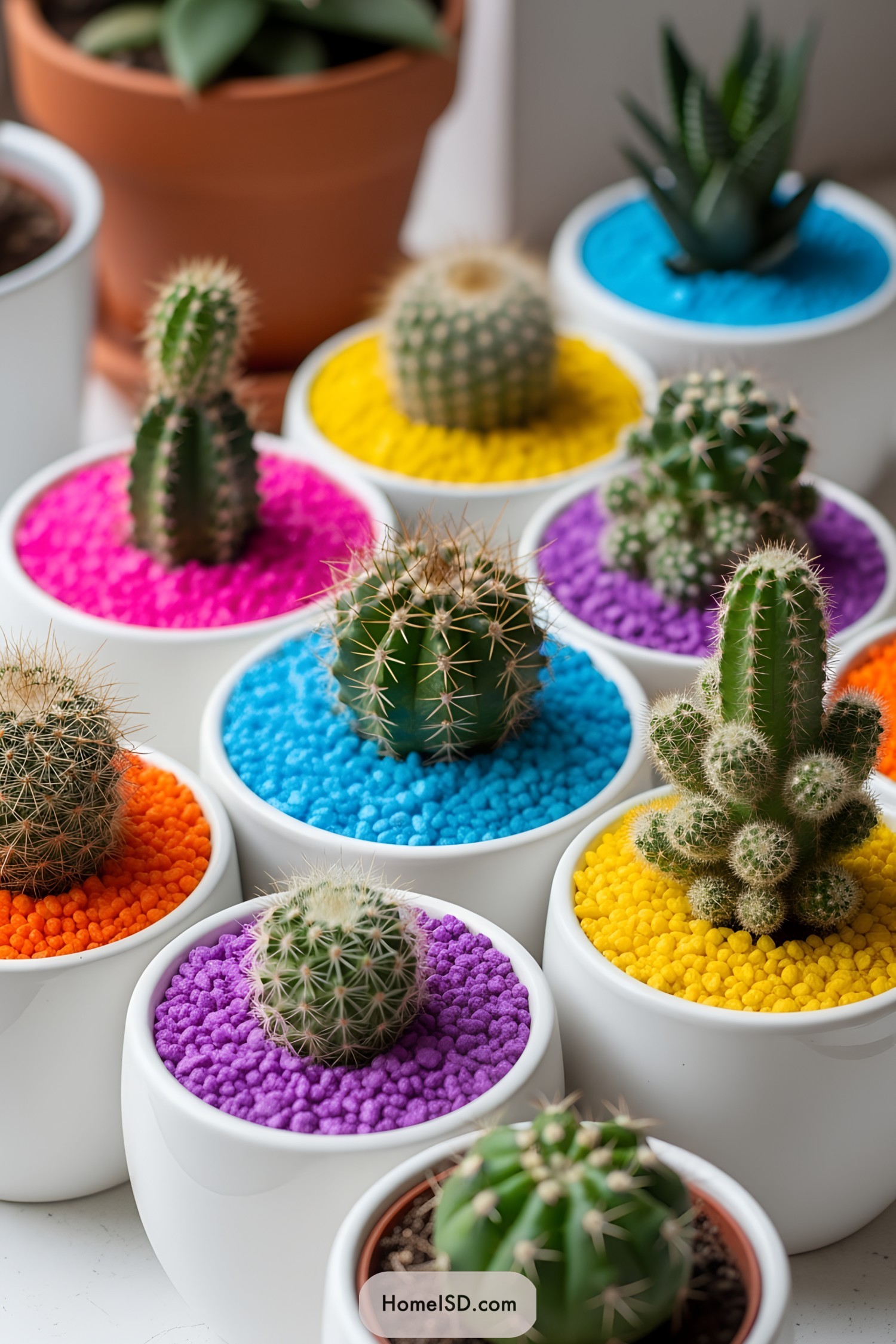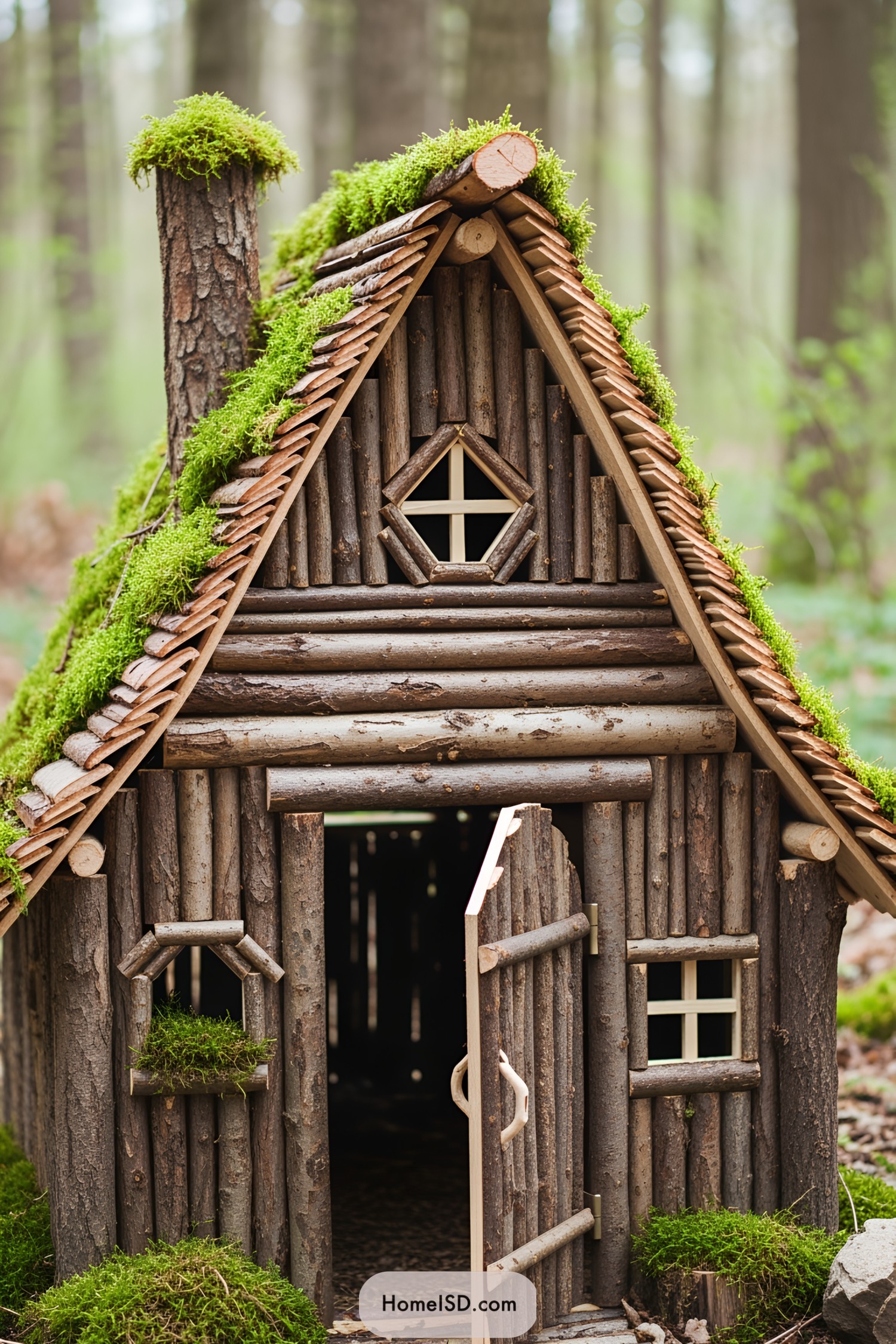Last updated on
We do our best to answer the question and give you multiple choices (varied budget) that you can use to automate your LED lighting. Read on!
Do you want your LED lights to turn on when you open the door? Well, you’ve come to the right place. It’s one of the many home automation ideas that people with any skill range can execute.
There are a few different ways you can get your lights to turn on as you open the door. The question is, which doors do you want to act as a trigger? And which lights do you want to turn on when the door opens?
Asking yourself these questions will give you a good idea of which option will work best for you. Today I’m going to provide you with a few ways of automating your LED lights. All of them are easy to complete, but some will cost you considerably more money.
Using Smart Technology To Automate Your LED Lights
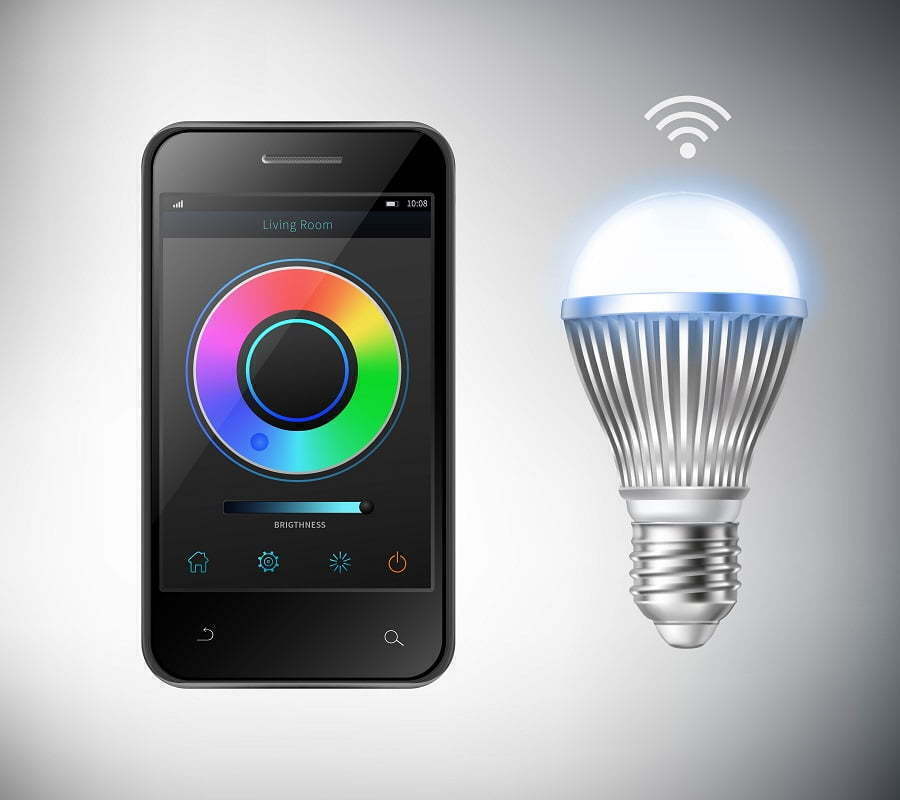
This option is the most expensive way of getting your LED lights to turn on. But the best thing is you get a lot more possibilities of which lights and doors you want to automate.
Depending on which lights and doors you want to automate will depend on what equipment you need. Below I’m going to give you a list of smart items you can use to help with your lighting solutions:
- Smart home hub
- Smart door lock
- Smart LED lights
- Smart LED strip
- Motion Detector
- Contact strip
- IFTTT
Now, you don’t need all of the equipment above; it depends on which doors and lights you want to automate.
I want to make this section as easy as possible. So, I’m going to split it down to the type of doors you can use, how to use it, and the smart technology you need to automate them:
Front Door
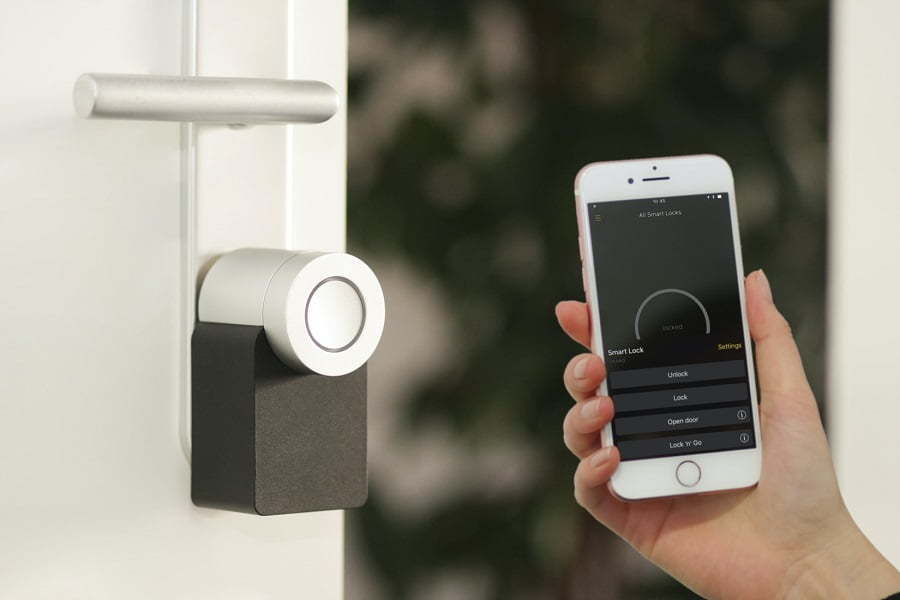
It’s probably one of the most popular doors to automate, but it’s also one of the most expensive. The reason is down to the smart equipment you need to automate your front door and the lights surrounding it.
Here’s what you’ll need:
- Smart Door lock
- Smart LED bulb
- IFTTT
- Smart home hub
The technique is to use the smart door lock to trigger your lights to turn on. You’ll need to install the door lock, home hub, and fit the LED bulb in whichever outlet you want to automate.
From there, you’ll need to use IFTTT (If This Then That), which is software you can use to set events based on triggers. The idea is to establish a recipe, so If This door unlocks Then, This light turns on.
Bathroom Door

This method is a little bit cheaper than the previous process, but still just as effective. For this method to work, you’ll need the following items:
- Smart home hub
- IFTTT
- Motion Sensors
- Smart LED bulb
You’ll need to plug your smart LED bulb into the bathroom outlet and set it up with your smart hub. You’ll then need to set up the motion detector to your home hub and place it where it can pick up the bathroom door’s motion.
Again you’ll need to use IFTTT software to create a recipe, so If This motion is detected Then, This light turns on.
Using the app’s settings, you can set the duration the light stays on and which colors you want to use.
Cupboard Door
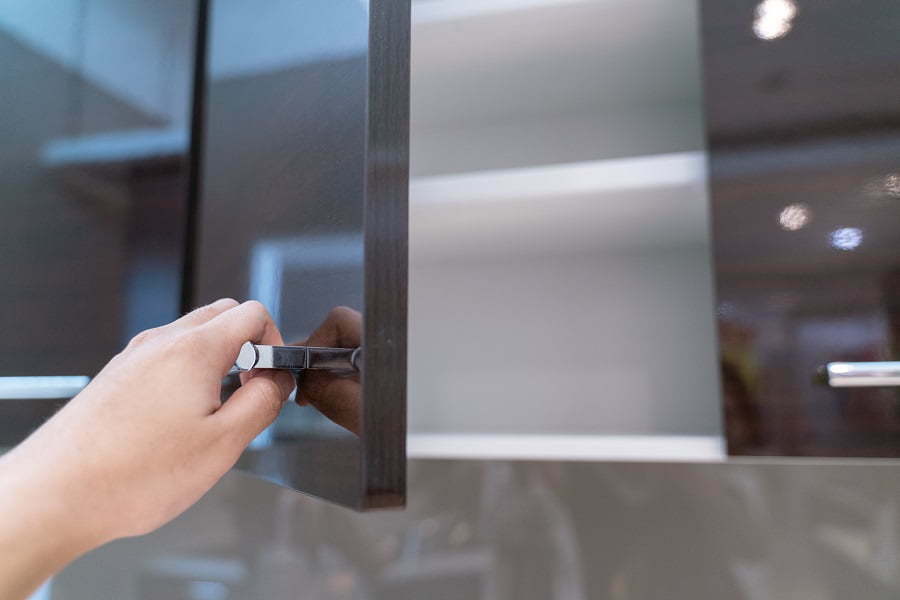
It can be hard to see in the cupboard due to the lack of lighting, which can make your life difficult. To add lights to your cabinet, you’ll need the following things:
- Contact strip
- Home hub
- Smart LED strip lights
- IFTTT
The idea is similar to the bathroom door, set the LED strip light in the cupboard, and link it to the home hub. Now place the contact strips inside the closet so that the stips are touching when the door is closed.
Now use IFTTT in the same way you have with the previous two methods.
The Cheapest Way Of Making Your LED Lights Turn On When The Door Opens
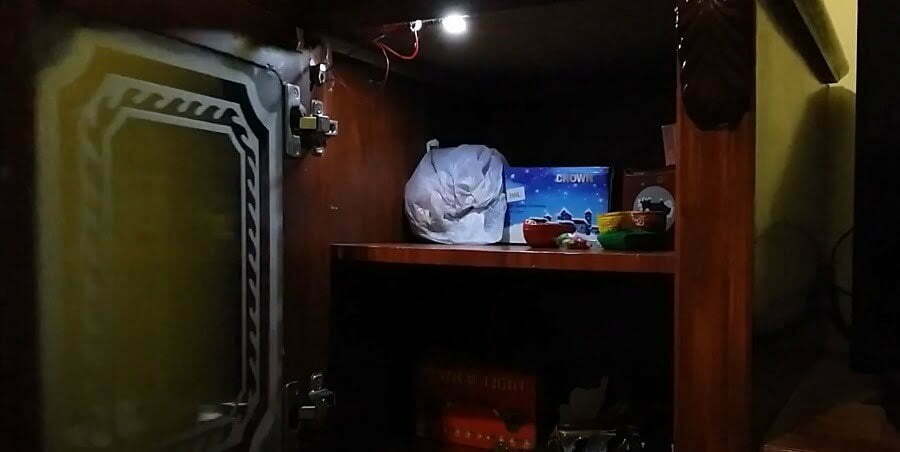
If you’re on a budget, there’s a cheaper way of automating your lights. And it can cost as little as $1 depending on what stuff you already have at home.
For this method, you’ll need:
- Double-sided tape
- Scissors
- 9V Battery
- 9V power terminal
- Two nuts (one bigger than the other)
- Red wire
- Black wire
- LED Bulb
- Elastic band
As you can see, the equipment is pretty basic items you can pick up from most hardware stores.
17 Steps To Automate Your LED Light
By following this quick tutorial, you’ll have your LED light automated to turn on as the door opens. The steps are easy to follow and will take you no longer than 20 minutes.
- Start by cutting the elastic band in half using the scissors to make one long piece
- Thread the elastic band through the smaller nut and tie it to one end
- Trim down the shorter end with the scissors this stops the elastic band from catching later on
- Strip back one end of the red wire so the copper is exposed
- Thread the wire through the nut with the elastic band and twist the wire around the nut so it stays in place
- Strip the cable from both ends of the black wire and connect one side to the negative terminal of the LED bulb
- Connect the other side of the black cable to the remaining nut
- Now it’s time to join the 9V battery terminal, do this by connecting the red wire with the nut and the red wire of the terminal
- Now connect the black wire from the terminal to the other side of the LED bulb
- Plug the 9V battery into the power terminal, now touch the nut together to see if the lights come on
- If everything works out, it’s time to secure everything into place with double-sided tape
- Place one piece of tape on the battery, another piece on the LED bulb, and finally a small piece on the nut that leads to the black wire
- Go to the door you want to attach the light to and open the door, use the double-sided tape to stick down the nut connected to the black wire just above the hinge
- Stick the LED to the top of the cupboard, so the light shines down
- Stick the 9V battery next to it
- Thread the elastic band through the nut connected to the black wire from the inside to the outside
- Finally, connect the elastic band to the door so that when the door is open both the nuts are touching
Your LED light should now turn on and off as you open and close your door. And best of all, for a fraction of the price.
That’s everything you need to know about automating your lights. If you’re still struggling, there’s a great instructional video you watch on YouTube.
Remember, there are several ways to automate your home; you just need to choose the right one for you.
Recap
